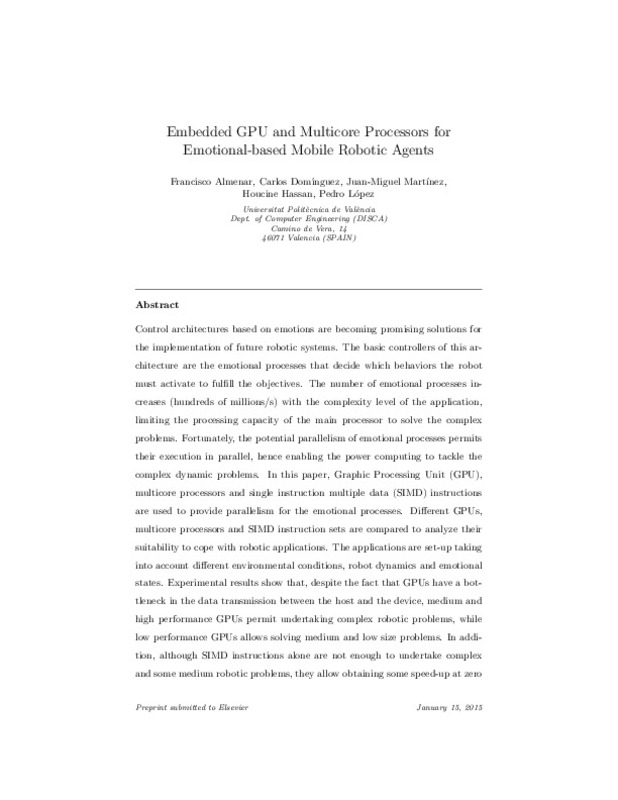JavaScript is disabled for your browser. Some features of this site may not work without it.
Buscar en RiuNet
Listar
Mi cuenta
Estadísticas
Ayuda RiuNet
Admin. UPV
Embedded GPU and multicore processors for emotional-based mobile robotic agents
Mostrar el registro completo del ítem
Francisco Almenar; Domínguez Montagud, CP.; Hassan Mohamed, H.; Martínez Rubio, JM.; López Rodríguez, PJ. (2016). Embedded GPU and multicore processors for emotional-based mobile robotic agents. Future Generation Computer Systems. 56:192-201. https://doi.org/10.1016/j.future.2015.05.010
Por favor, use este identificador para citar o enlazar este ítem: http://hdl.handle.net/10251/80794
Ficheros en el ítem
Metadatos del ítem
| Título: | Embedded GPU and multicore processors for emotional-based mobile robotic agents | |
| Autor: | Francisco Almenar | |
| Entidad UPV: |
|
|
| Fecha difusión: |
|
|
| Resumen: |
Control architectures based on emotions are becoming promising solutions for the implementation of
future robotic systems. The basic controllers of this architecture are the emotional processes that decide
which behaviors ...[+]
|
|
| Palabras clave: |
|
|
| Derechos de uso: | Reserva de todos los derechos | |
| Fuente: |
|
|
| DOI: |
|
|
| Editorial: |
|
|
| Versión del editor: | http://dx.doi.org/10.1016/j.future.2015.05.010 | |
| Código del Proyecto: |
|
|
| Agradecimientos: |
|
|
| Tipo: |
|






![[Cerrado]](/themes/UPV/images/candado.png)



